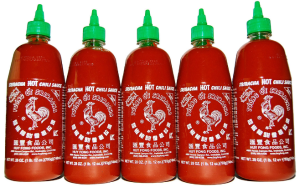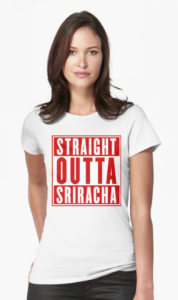Advertisements are everywhere we look. If you spend any amount of time online, you know that nearly everything you click on has some kind of advertisement associated – somewhere. South Park dedicated an entire season’s plot on the prevalence of advertising.
We are used to them, we expect them, and, when ads are done well, we even enjoy them! Some muse that Super Bowl advertisements now overshadow the game, and some viewers watch only for the commercials (BSSP, 2016). Every product must have an ad. Right? Right. …right?
Let’s think about this for a moment. Can a product be sold with minimal to no advertising? What about an expensive purse that may only run print ads within high-fashion magazines? What wildly popular condiment has no advertising in any form? Most importantly, how do these companies do it?
Those high-fashion purses rely on minimalistic advertising as part of their marketing strategy. They want to appear, simply put, a bit snobby. The small scale, strategically placed advertisements in publications such as Vogue help reinforce the appearance of exclusivity (Bastien, 2015). It’s almost like they are saying, “Just knowing about this purse makes you great!”
Much of the press that some of these products get does not count as actual advertisement but rather shows pictures of celebrities wearing the gear, in their daily lives. It’s not just a purse that Stella McCartney is advertising, it’s an idea of exclusivity. Seeing Charlize Theron holding the bag lends an additional layer to that same message.
On the other end of the spectrum, we have Sriracha. The beloved hot sauce, found in restaurants, grocery stores, quick marts, and kitchens all over the world, does not even have its name trademarked. They have not updated their website since 2004. And, they do not advertise – at all (Berman, 2013). What?! They certainly aren’t aiming for exclusivity like Stella McCartney is with purses. So what gives?
David Tran, the founder and CEO of Sriracha parent company, Huy Fong Foods, readily admits there is no focus on advertising, nor are there any plans to do so. Tran would rather make sure to deliver a quality product that sells itself, rather than spending any effort toward advertisements (Berman, 2013; Ferdman, 2013). In the case of Sriracha, this has worked brilliantly!
Now a pop-culture darling, t-shirts, stickers, and other paraphernalia with images of the hot sauce are sold by various companies. Though Huy Fong does not receive any proceeds from sales of these products sold by third parties, they serve as free advertising. The word-of-mouth element has certainly worked in favor of Sriracha, as it continues to enjoy climbing sales year after year, as it has since inception (Littman, 2015). On fire!
We live in a world full of advertisements, and there is ample evidence that they are an important part of promoting products and increasing sales. The exclusionary, minimalistic marketing tactics of luxury items will clearly not work for every product. The complete lack of any advertisement, used by brands such as Sriracha, is a risky one that is certainly not right for every company. But, if these approaches work for some companies and make it a little easier for the rest of us to “just read the news,” more power to them.
And please, keep talking about Sriracha – we all need more hot sauce in our lives!
References
Bastien, V. (2015, September 20). Marketing to a high-end consumer, using the luxury strategy. Entrepreneur Middle East. Retrieved from https://www.entrepreneur.com/article/250745
Berman, J. (2013, August 26). 10 cult brands so popular they don’t need to advertise. The Huffington Post. Retrieved from http://www.huffingtonpost.com/2013/08/26/companies-dont-use-advertising_n_3768504.html
BSSP. (2016, February 4). Super bowl ads may matter more than the game. Medium. Retrieved from https://medium.com/@bssp/super-bowl-ads-may-matter-more-than-the-game-d6a2361b2a47#.6suwa4ykk
Ferdman, R.A. (2013, October 21). The highly unusual company behind Sriracha, the world’s coolest hot sauce. Quartz. Retrieved from http://qz.com/132738/the-highly-unusual-company-behind-siracha-the-worlds-coolest-hot-sauce/
Littman, M. (2015, June 25). How Sriracha got so hot. Entrepreneur. Retrieved from https://www.entrepreneur.com/article/246728





7 Responses to You Have to Advertise to Sell… Or Do You?